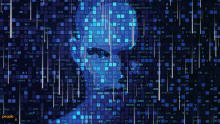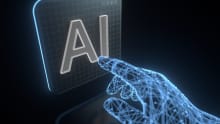Engage in the Dance of Innovation

I walked into Day 2 with the familiarity of the venue and formats at work and it was fascinating to note that how quickly we adjust to newer settings once we suspend our judgment and be truly present. I arrived at the venue at 9 AM primarily to see the national award winning actor Ashish Vidyarthi in action. His talk on 'When the intelligent Arty meets Me' was a fascinating lesson in blending technology with human emotions. In a very simple style, he emphasized the importance of AI while also underpinning the human aspects which are difficult for the AI. Through simple statements and voice modulation, he made a significant impact on me and gave a lesson in telling stories and delivering your message. His narration that he is also an actor and how he loves playing multiple roles was refreshing. He made me aware of the inherent multiplicity in me and how to become more comfortable with the same.
The keynote was an interesting mix of speakers and Arvind Gupta made a fair point when he talked about data is the new oil. He attracted our attention to the fact that; with Aadhar, Jan Dhan and Mobile penetration in India; we have a unique platform which is unmatched in the world. He underlined this innovation has happened in the country and how using the platform; Reliance Jio has been able to simplify the customer on boarding process. This was a refreshing look, at Aadhar + Bank + Mobile as a platform and imagines possibilities through the same.
Suresh Narayan, Chairman and MD at Nestle, stated that while we classify workforce into baby boomers, Gen X and Millennials, the aspirations of these categories are similar. Hence organizations need to focus on building leadership “software” and culture. He emphasized on the role of leaders as mentors and coaches and leading the way by demonstrating the stated values in their actions.
As I was prioritizing sessions to attend from Day 2 agenda I realized that while the theme is innovation many topics are essentially touching the aspect of “human processes”. It was reflected in talks around leadership, culture, stories and even looking at how to institutionalize risk taking behaviors. It then appeared to me that day 2 is just putting the human right in the middle of technology. It reminded; while we chase technological innovation and new technology toys; it’s equally important to keep the spirit of inquiry alive. The more we understand self, our ability to make decisions about and with technology toys will improve.
This feeling resonated with some individuals in my interactions. They were looking for clarity of thought and understanding of the market; while interacting with HR Technology solution providers. So if you are focusing on technology tools you need to balance it with human emotions. Understand how to tell your story to create maximum engagement.
The session by Swati Mohan on Dance of Mirror Neurons was an interesting experiment in dance using a concept from neuroscience. Mirror neurons are defined as neurons that are fired when we perform a particular action or when we see the same action being performed by another human. Thus, the neurons mirror the behavior of others, as if we were acting. Some believe that these are important aspects of learning by imitating. Some others argue that this is neural basis of human capacity for emotions such as empathy. Through the dance performance, this was beautifully showcased and I thought the use of actual mirrors made a point about self.
The next talk by Ektaa Aggarwal on becoming a culture designer focused on culture building mindset and the design process for culture design. She argued that for culture building mindset it’s imperative that we observe the emergent behaviors in the system to then create rituals to emphasize or deemphasize such behaviors. She encouraged us to experiment with creative confidence and asked people to build prototype environments before making HR tech buying decisions. She emphasized the importance of being an effective communicator to ensure that we build an initial cohort for culture building process.
The culture building process according to her is very similar to any other design process which starts with research via observations, journals, pictures and talks with various stakeholders. This research should then culminate into defining the problem; as the way, you define the problem will shape what solutions will emerge. This is followed by gathering inspiration from an apparently disconnected space. She gave a beautiful example how a medical operation theatre design can be inspired by what happens in the pit stop of a formula 1 race. This inspiration is followed by visioning with all stakeholders where she cited an example from Apple Inc where every year 100 people gather to define the top 10 things the company should focus on. The inspiration and visioning are followed by design of rituals that help stay the course. Her lucid explanation emphasized the importance of human processes in innovation and technology.
The closing keynote by Dr. Thomas Chamorro-Premuzic and Shweta Shukla gave a lot of food for thought. They talked about the use of social media data to form personality profiles and its use in decision making. They threw the question of Shazam for the soul – do determine if computers can assess humans better than humans themselves. Through examples and stories from their organizations, they emphasized the importance of culture and role of leadership in the same. They also talked about how success is now increasingly dependent on how we interact and work with others at work.
This thought provoking conversation was topped by an entertaining, engaging and unconventional way of interaction and presentation by Stefan Haves of Cirque Du Soleil. Through his performance, he made us aware of our internal biases and processes that impede innovation. He talked how shy is equaled to selfish. He stated that we do not innovate or experiment because we are afraid of shame and failure. He encouraged us to detach self from the ideas while putting the ideas in perspectives. This truly blended the themes of performance and innovation of the 2 days of the conference.
The stand-up comedy act by Abijit Ganguly was a welcome refreshing look at HR and the world of organizations. He had the audience in splits with his wit and presence of mind. He narrated some simple life situations and presented them in a hilarious manner to ensure that everyone left the conference with a smile on their face.
So what do we make of TecHR17 which ended with the performance of two clowns? If one looks at the history of clowns it is not difficult to understand that they occupy an important role in the socio-cultural aspect. They hold the mirror to us and ensure that we learn to laugh at ourselves.
For me, Day 2 was a great day of discovery and re-discovery of the clown within self and being comfortable with it while navigating the maze of technology. My biggest take away from Day 2 is to develop the empathy for self and others, while acknowledging and sharing my success and fears with others, especially in this highly technologically connected world.
Thanks, PeopleMatters for putting the human back in the technology equation and creating such a wonderful, engaging and entertaining experience for all of us at TechHR17.
My recommendations: These are sessions that I missed attending on day two but have caught up on them via these articles and I recommend these to anyone interested in the same topics
Cracking the Code of HR Technology Buying
















